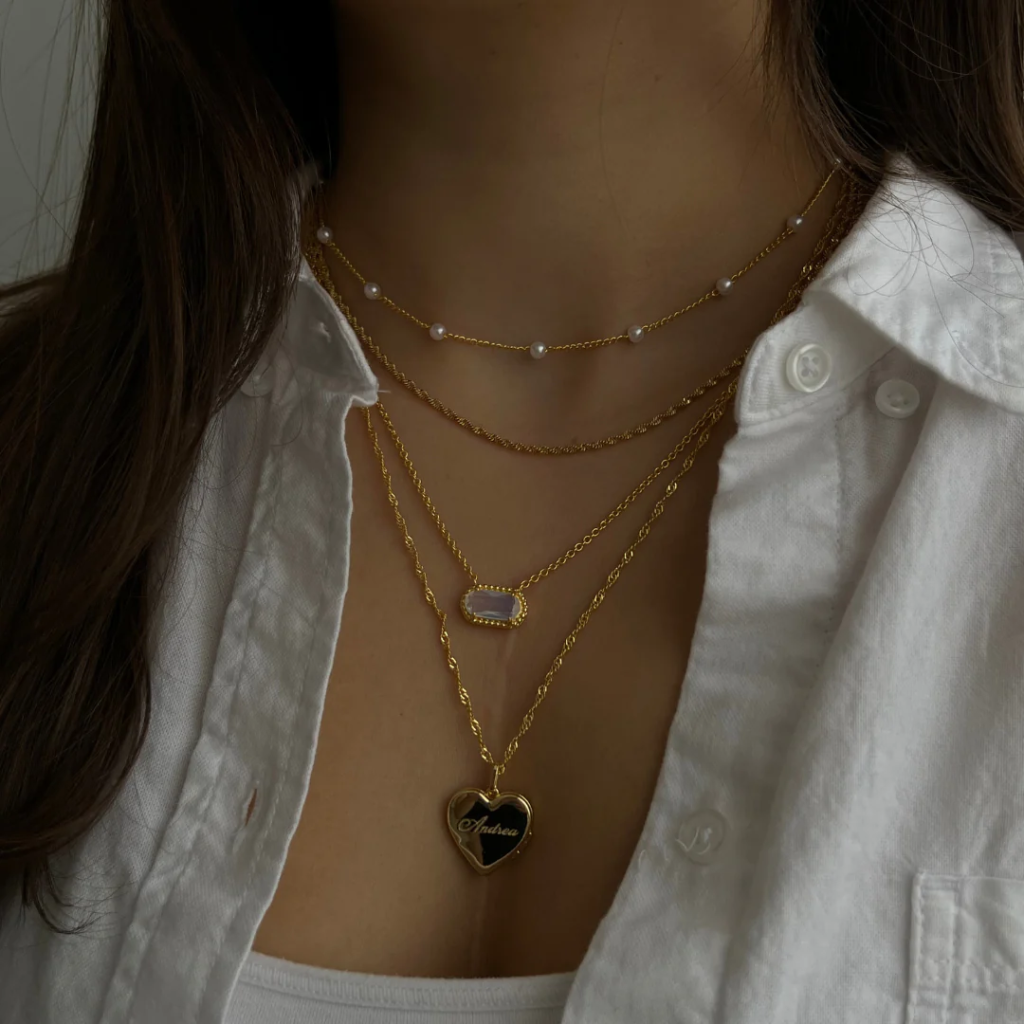Handmade jewelry has long been celebrated for its unique qualities and intricate craftsmanship. Among the many types of handmade jewelry, double cross necklaces stand out as a symbol of elegance and spirituality, combining aesthetic beauty with profound significance. This article delves into the craftsmanship and artistry involved in creating these distinctive pieces, shedding light on the dedication and skill that make each double cross necklace a work of art.
The Significance of Double Cross Necklaces
Symbolism and Meaning
Double-cross charm, featuring two intersecting crosses, often carries rich symbolism. The design can represent various spiritual or personal meanings, such as duality, balance, and protection. In Christian symbolism, the double cross may denote the intersection of divine and earthly realms, or it may symbolize the unity of the Old and New Testaments.
In other contexts, the double cross can signify personal milestones or relationships, with each cross representing different aspects of a person’s life or journey. This symbolism adds a layer of depth to the necklace, making it not just a piece of jewelry but a meaningful statement.
Popularity and Trends
The double cross necklace has gained popularity in contemporary fashion due to its striking design and versatile appeal. It can be crafted in various styles, from minimalist and modern to ornate and vintage-inspired. This versatility allows the double cross necklace to fit seamlessly into different fashion preferences and occasions, enhancing its appeal to a broad audience.
The Craftsmanship Behind Handmade Double Cross Necklaces
Materials and Techniques
Handmade double cross necklaces are crafted using a variety of materials, each chosen for its unique properties and aesthetic appeal. Common materials include:
- Gold: Renowned for its timeless beauty and durability, gold is a popular choice for double cross necklaces. It can be used in various finishes, from polished to matte, and can be combined with gemstones for added elegance.
- Silver: Sterling silver is another favorite material, valued for its affordability and versatility. It can be easily shaped and polished to achieve a sleek, contemporary look.
- Platinum: Known for its rarity and strength, platinum is often used in high-end double cross necklaces. Its natural white sheen enhances the brilliance of any accompanying gemstones.
- Gemstones: Precious stones such as diamonds, sapphires, and emeralds can be set into the double cross design to add a touch of sparkle and color.
The techniques used in crafting these necklaces vary depending on the material and design. Common techniques include:
- Casting: A process where molten metal is poured into a mold to create the double cross shape. This technique allows for precise detailing and consistency.
- Hand Forging: Involves manually shaping the metal using hammers and anvils. This technique is often used to create more intricate or custom designs.
- Stone Setting: Gemstones are carefully placed into the cross design, often using prongs or bezels to secure them in place. This requires a steady hand and keen eye for detail.
Design and Personalization
Handmade double cross necklaces often feature personalized elements that reflect the wearer’s style or significance. Designers may offer customization options such as:
- Engraving: Adding initials, dates, or meaningful words to the cross can make the necklace uniquely personal. This is often done using laser engraving or hand-engraving techniques.
- Custom Gemstones: Choosing specific gemstones based on their color, meaning, or personal significance can enhance the necklace’s meaning and visual appeal.
- Unique Designs: Artisans may create bespoke designs that incorporate unique elements, such as mixed metals, intricate filigree work, or custom-shaped crosses.
The Artistry of Handmade Double Cross Necklaces
The Role of the Artisan
The creation of a handmade double cross necklace involves a high level of artistry and skill. Each piece is carefully crafted by skilled artisans who bring their own creativity and expertise to the process. From conceptualization to the final touches, the artisan’s role is crucial in ensuring that the necklace not only meets aesthetic standards but also embodies the intended symbolism and quality.
The Creative Process
The creative process behind handmade double cross necklaces typically involves several stages:
- Conceptualization: The artisan begins by sketching the design, considering the symbolism, materials, and overall aesthetic. This stage often involves discussions with clients to ensure their vision is captured.
- Prototyping: A prototype may be created to refine the design and test materials. This allows the artisan to make adjustments and perfect the piece before final production.
- Crafting: The chosen materials are carefully worked into the final design. This stage requires precision and attention to detail to ensure that every element of the necklace is crafted to perfection.
- Finishing Touches: The necklace is polished, inspected, and any final adjustments are made. This stage ensures that the piece meets high standards of quality and craftsmanship.
The Appeal of Handmade Jewelry
Handmade double cross necklaces offer a unique charm that mass-produced jewelry often lacks. The attention to detail, personal touch, and the story behind each piece make it special and meaningful. The artistry involved in creating these necklaces results in a one-of-a-kind item that stands out in any jewelry collection.
Conclusion
The craftsmanship and artistry behind handmade double cross necklaces showcase the beauty and significance of personalized jewelry. From the intricate design process to the skilled techniques used, each piece reflects a deep commitment to quality and creativity. Whether chosen for its symbolism or its aesthetic appeal, a handmade double cross necklace is more than just a piece of jewelry—it’s a testament to the artistry and dedication of its creator.
